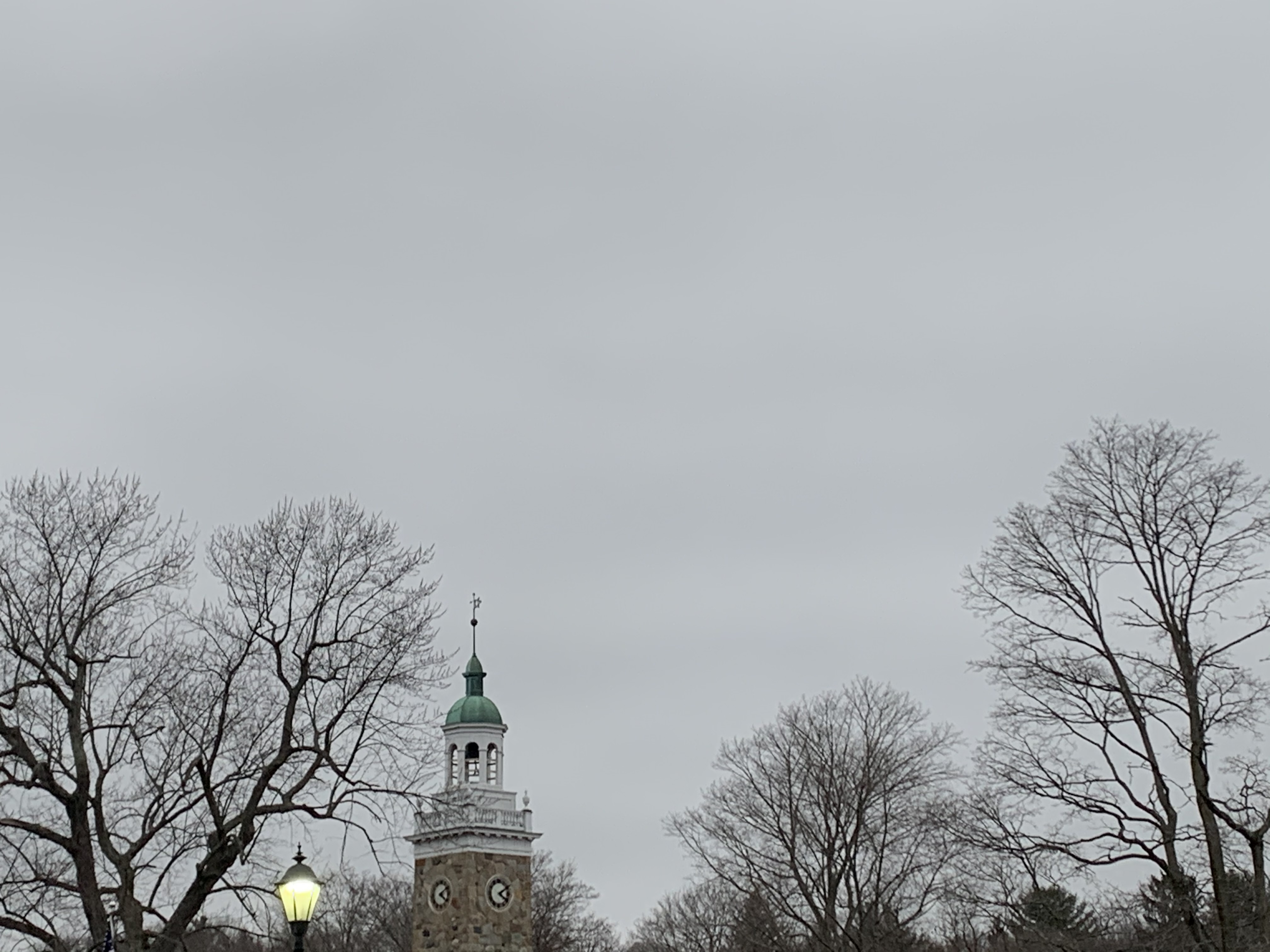We all know the New England drill: November hits, and the days shorten, the skies cloud, the flowers wilt. Our sunlight vanishes, replaced by a constant cold and windy darkness. The lack of light feels like enough to put us all in bad moods as we practically hibernate until April— and does. Seasonal Affective Disorder is a kind of seasonal depression that impacts an estimated 10 million Americans and is most common among those living far away from the equator.
Abbreviated as SAD, the National Institute of Mental Health formally recognized the condition in 1984 following studies conducted by Dr. Norman Rosenthal, clinical professor of psychiatry and author of the book “Winter Blues.” SAD is characterized as a seasonal pattern of major depressive episodes, and its cyclical nature is what differentiates it from major depressive disorder.
“We overlook the obvious, which is that it’s dark as pea soup outside. That’s why I think [SAD] goes unrecognized—it’s right in front of our noses,” said Rosenthal.
SAD impacts young adults more than older adults, and women are four times more likely to be diagnosed with it than men. Given the demographics SAD affects most, as well as the short days and long winters that Bostonians know so well, we can assume that students at the high school are impacted by SAD on some level.
“I would not be surprised if seasonal depression were impacting my students and there was data saying that seasons impacted the overall mood of people at the high school. Lack of sunlight doesn’t necessarily cause depression, but we do know that there is a correlation between exposure to natural light and mood elevation,” said AP Psychology teacher Mr. Kyle Gekopi.
Although the high school nurse’s office and Guidance department cannot definitively say that SAD causes an uptick in student visits to the nurse or to their guidance counselors, it could be a factor.
“I think it’s hard to discern if our rise in visits is because of SAD versus the time of the school year it is. There are lots of ebbs and flows throughout the year; we see a rise in visits before the holidays, during college admissions, and towards the end of the year. I wouldn’t say it’s the driving force of the vast majority of our visits, although it could be the driving force for any one specific visit,” said Ms. Dana Plunkett, Guidance department head.
“We do see a rise in nurse visits during the winter months, I don’t know that I could attribute it to SAD, but I think there might be a correlation. The visits to our office are often stress related, so the winter and the end of the semester affect visits to our office. I don’t think SAD is the main factor, but I do think it is a factor,” said high school nurse Ms. Shari Johnson.
Whether or not SAD impacts you, it has some hold on the mood of the high school during long Massachusetts winters. Generation Z is probably even more impacted by SAD than people have been in the past because of the screen addictions that keep them indoors.
“I would 100 percent say that due to the lack of light and seasonal changes, I am indoors more often in the winter. I don’t like to leave my house. I would say that screens keep me inside, too, and I have much less motivation to exercise because doing so inside is less enjoyable. I notice the light and weather really affecting my mood in the winter,” said Alex Coleman ’20.
“I think SAD influences kids now even more because they are on screens more, indoors more, not getting as much exercise. It is a phenomenon, it is impactful, and it causes challenges for people,” said Plunkett.
No matter if students are consciously affected by SAD, there are steps high schoolers can take to combat its effects and stay healthy in the winter months.
“Consult a physician, go outside, spend less time on screens, eat and sleep well, exercise. All of these things dramatically affect your physiology, which is what SAD starts to wreak havoc with. You can’t make the sun come out, but you can make yourself get outside. Set yourself up, have good personal hygiene, so when those 10 rainy days happen, you don’t get impacted as much,” said Plunkett.
The clinical treatments for SAD include light therapy, psychotherapy, and antidepressants. Many trials have indicated that artificial bright white light helps patients with SAD, typically leading to a positive response or remission of SAD in about 60 percent of patients. Light therapy works by mimicking the natural light from the sun, and it may cause a change in brain chemicals that is linked to mood.
SAD can put a damper on an already gloomy season, causing patients to feel stuck in the dark pockets of the seasonal cycle. By educating yourself on SAD’s effects and symptoms, you can make the grey winter months a little bit brighter.

